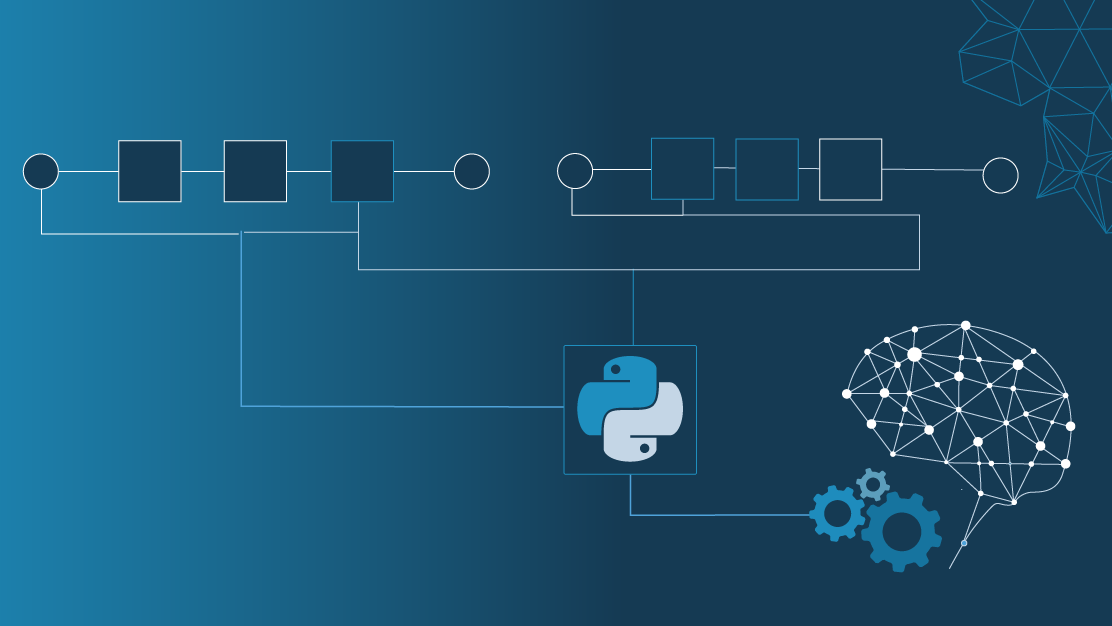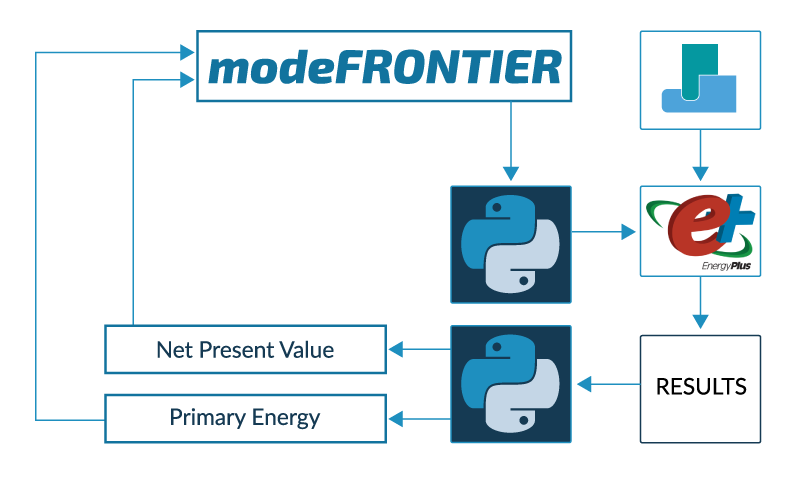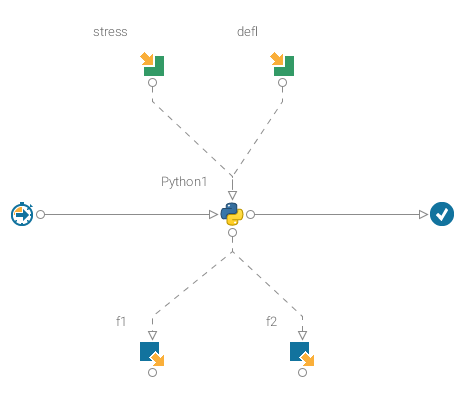Python for engineers: The benefits of executing codes in an automated workflow for design optimization
Written by Danilo Di Stefano and Alessandro Viola
13 July 2020 · 6 min read

Why Python meets engineering needs
Nowadays, deep expertise in scripting languages and programming became a valuable skill set for engineers and R&D professionals in general to perform process automation, data analysis, and visualization.
Python, among other human-readable and open-source programming languages, gained popularity over the last decade due to its simplicity and flexibility:
- The programmers, no matter if they are beginners or experts, can just focus on problem-solving rather than struggling with the nuances of the programming languages
- Numerous libraries of scientific, engineering, and web-related extension along with an enthusiastic community allow to save time and gain valuable support when using functions in your program
- Python can automate everything, from sending HTTP requests, interacting with APIs, to loading and managing databases
- Advanced Machine Learning capabilities enable engineers to elevate their data analysis efforts
Why Python combined with an optimization workflow helps to master engineering complexity
Simulation tasks have been mostly carried out by engineers in the aerospace and automotive industries. They can rely on several best-in-class software to perform analysis across many engineering disciplines to reduce their development timescales and costs.
Typically, numerical methods are needed to solve complex engineering problems. In this context, Python became a useful programming language for developing engineering applications and facilitating numerical computation. Also, combining scripting languages such as Python with ESTECO process automation and integration technology makes it possible to create efficient pre and post-processing workflows, easily execute the code and handle very large datasets for effective exploration and analysis.
Further, the benefits of simulation have recently gained popularity in the architecture, engineering, and construction industry. Innovative solutions along with sustainability and profitability have to be balanced to complete complex buildings to tight deadlines and high industry standards.
Usually, building performance modeling and simulation rely on complex models generated by different simulation tools with limited automation capabilities, making the set-up and run of parametric studies a very time-consuming task. Thanks to ESTECO technology and its Python integration capabilities, researchers from the Department of Engineering and Architecture of the University of Trieste were able to investigate the effect of climatic data on the energy performance of a refurbished social housing building. The energy reduction measures involved the application of internal insulation layers and the replacement of existing windows with more efficient ones.
ESTECO modeFRONTIER software has been used to drive the optimization strategy with the aim of minimizing the primary energy and the net present value of the refurbishment investment for three different weather profiles.

Starting from a script implemented in Python using the eppy library, the code modified the building model characteristics, ran the simulation in EnergyPlus, and computed the investment costs and the net present value. By easily importing their own Python script in the modeFRONTIER workflow, researchers were able to enhance the process automation and apply multi-objective optimization algorithms to find the best designs with minimum primary energy consumption and refurbishment investment.
The Python node ensures fast communication between modeFRONTIER and the Python interpreter. It allows users to easily execute code in a workflow and process very large datasets for effective exploration and analysis.
Data science and engineering teams can easily interact with modeFRONTIER via a Python script node and then create a custom workflow to meet their needs for a specific simulation design process:
- Integrate their own Python interpreter in one-click
- Make use of written quality code and put insightful models in the modeFRONTIER workflow
- Automate specific solvers and drive the execution of simulation chains to perform design exploration and optimization studies

The Python integration is actually part of ESTECO's broad commitment to providing software solutions that maximize interoperability and make the most of your investment in simulation and modeling technologies. In fact, our leading integration and process automation technology helps to manage all the logical steps of your engineering process from a single automated workflow.
modeFRONTIER, process automation and design optimization software makes it possible to directly integrate and run many third-party CAD and CAE tools to perform design exploration and optimization studies. In addition to the commercial engineering solvers, our wizard-style tools likely provide guidance to easily integrate any in-house solvers and your favorite programming languages such as Python.
modeFRONTIER is the leading software solution for simulation process automation and design optimization
Design better products faster
modeFRONTIER is the leading software solution for simulation process automation and design optimization
Design better products faster
modeFRONTIER is the leading software solution for simulation process automation and design optimization


